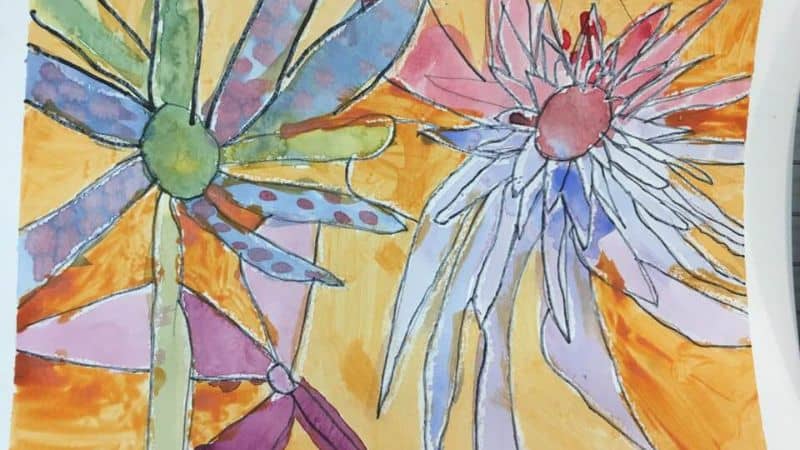
Cultural Humility and Creativity and Learning in the Years 2017 – 2029

One Social Re-constructivist’s Journey On the Road to Building a More Just & Ecologically Resilient World

Sasha at the Detroit Riverfront
I consider myself a social-reconstructivist artist, educator, and curriculum designer. Many people ask me what I mean by – all that. According to Wikipedia, “Social reconstructionism is a philosophy that emphasizes the addressing of social questions and a quest to create a better society and worldwide democracy. Reconstructionist educators focus on a curriculum that highlights social reform as the aim of education. I like to say that when you get smarter, the world becomes a better place.
As educators, we shouldn’t ever claim to know precisely the unique gifts each individual has to offer the world and the exact right path leading to manifestation, especially in this rapidly shifting and increasingly difficult world. I believe in the inherent worth and dignity of every individual, but I don’t believe educators are the “sage on the stage.” It is educator’s “duty” to guide and accompany learners to construct knowledge they will need on the journey of becoming who they are – not unlike the work of a midwife who attends a birth (the mother does the work of bringing the child into the world) or Michelangelo who created David from a piece of marble that had been twice discarded by other sculptors (David’s shape was revealed to Michelangelo in the process of working with the stone).
Author Sir Kenneth Robinson, educationalist, British author, speaker, and international advisor on education in the arts, speaks about creativity and questions whether or not schools kill it. (Click on the link to view a very clever animation of his Ted Talk). My response to his question is based on my experiences as an urban educator who taught children with diverse language, learning, and behavioral challenges … yes, we do.
I discovered the phrase cultural humility while reading Empowered Feminism and Cultural Humility, a blog article written by Sue Wallingford, and I experienced an “ah-ha moment.” I talk a great deal in my presentations to graduate students (who are studying to become teachers) and teachers attending professional development about cultural competency. Cultural competence requires that organizations have a defined set of values and principles and demonstrate behaviors, attitudes, policies, and structures that enable them to work effectively cross-culturally. This is a well-recognized term and considered a best practice in educational circles. Wallington asserts that this term should be replaced by the term cultural humility.
Cultural Competence asks us (as author Lisa Delpit beautifully frames it) to understand that we are always teaching other people’s children, who differ from us in ways that are both visible and invisible but always impact the access, participation, and progress of the learning. The folks at CADA explain, “While cultural competency implies that one can function with a thorough knowledge of the mores and beliefs of another culture; cultural humility acknowledges that it is impossible to be adequately knowledgeable about cultures other than one’s own.” This shifts the “center” focal point of teaching and learning and keeps it shifting. The teacher is no longer solidly at the top and center! It challenges us to examine our white privilege and not always to always ask “who’s story is being told and whose is being left out” but to listen to the stories that people different from ourselves are telling and ask ourselves how can I change from listening to this story? Wallingford suggests that …”cultural humility positions educators to speak from a place of curiosity and compassion and it constantly puts the student and teacher in the place of not knowing; never assuming to have the answers; opening always to the moment at hand, and the people encountered as worthy of their own history and complexity.”
The people at CADA also say Humility has traditionally connoted a kind of meekness or humbleness, but it can also be used to “denote a willingness to accurately assess oneself and one’s limitations, the ability to acknowledge gaps in one’s knowledge, and an openness to new ideas, contradictory information, and advice. Why is cultural humility important? According to CADA (and in my opinion), there are three big reasons:
- Cultural humility means not pigeon-holing people. Knowledge of different cultures and their assumptions and practices is indeed important, but it can only go so far,
- Cultural humility is also an important step in helping to “redress the imbalance of power, and
- Approaching each encounter with the knowledge that one’s own perspective is full of assumptions and prejudices can help one to keep an open mind and remain respectful of the person (s) seeking involvement.
This sort of thinking not only turns the table on educators but keeps it spinning. It is not an easy path to walk your talk because it demands that we can’t “do school” the way we have been doing it over the centuries. In his presentation, Sir Kenneth reminds us that we don’t even know what specific jobs we are preparing today’s kindergarteners for. They will graduate in the year 2029! So re-creating curriculum and re-designing schools, and professionally developing teachers in this changing spinning world is going to take some creativity, hard work, and self-reflection. I’m in – are you?
Sources:
- Image 1: Portrait of Sasha by Melissa Levi
- Image 2: Located online@ https://themuslimtimes.info/life-is-precious/
- Wallingford, Sue (2013) Empowered Feminism and Cultural Humility located online @ https://ncasi.wordpress.com/tag/naropa-community-art-studio-international/
Share
If you're new here, you may want to subscribe to my RSS feed. Thanks for visiting!

